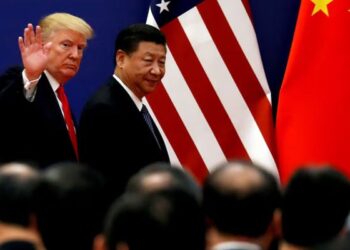The rivalry between the United States and China has transcended military and economic arenas, finding its way into the rapidly evolving field of artificial intelligence (AI). As both nations race to develop advanced AI models, the disparities in their technological capabilities, regulatory environments, and strategic objectives have become pronounced. This article explores the factors contributing to the AI model gap between the two superpowers.
Understanding the AI Model Landscape
AI models are algorithms designed to perform tasks that typically require human intelligence. These models can undertake a range of activities, including natural language processing, image recognition, and predictive analytics. The effectiveness of an AI model depends on several key factors:
Key Factors in AI Development
- Data Availability: Access to vast datasets is crucial for training effective AI models. The more data a model has, the better it can learn and improve.
- Computational Power: AI development requires significant computational resources, including GPUs and specialized hardware.
- Talent Pool: A robust workforce equipped with the necessary skills is vital for AI research and development.
- Research Investment: Financial backing for AI initiatives can accelerate innovation and result in superior models.
The US Edge: Innovation and Funding
Historically, the United States has led the world in AI innovation. Several factors have contributed to this lead:
Strong Investment Ecosystem
- Venture Capital: The US has a thriving venture capital environment that invests heavily in tech startups and AI research, allowing for rapid prototyping and commercialization of AI solutions.
- Public Funding: Government initiatives, like the National AI Initiative Act, have allocated significant funds towards AI research, fostering innovation.
Leading Research Institutions
- Elite Universities: Institutions such as Stanford, MIT, and Carnegie Mellon are at the forefront of AI research, churning out groundbreaking studies and pioneering technologies.
- Corporate R&D: Companies like Google, Microsoft, and Amazon are investing heavily in AI research, resulting in cutting-edge models and applications.
China’s Rapid Advancements
China is quickly closing the gap through aggressive strategies and investments in AI. The Chinese government has outlined ambitious plans to dominate AI by 2030, which includes:
Government Support and Strategy
- National AI Strategy: China’s State Council released a plan aiming to make the country a global leader in AI by increasing investments and research output.
- Partnerships with Academia: Collaborations between universities and state-owned enterprises bolster research and practical applications.
Investment in Data and Resources
- Data Rich Environment: China’s large population and less stringent data privacy regulations allow for the collection and utilization of vast amounts of data, enhancing the effectiveness of AI models.
- Infrastructure Development: Significant investments in computing infrastructure, such as cloud services, have strengthened the foundation for AI innovation.
Challenges and Regulatory Differences
While both nations have made impressive strides, their regulatory environments and ethical considerations pose distinct challenges.
Regulatory Approaches
- US Approach: The United States tends to favor a more laissez-faire approach, encouraging innovation but often resulting in slower regulations regarding AI ethics and safety.
- China’s Control: The Chinese government exercises stricter regulations, which can expedite research processes but may also stifle creativity and competition.
Ethical Considerations
- Bias and Fairness: There are increasing concerns in the US regarding ethical AI and the implications of biased algorithms, while China’s focus often centers on surveillance and control.
- Transparency: The US emphasizes transparency and accountability in AI systems, contrasting with China’s opaque methodologies.
The Future of the US-China AI Competition
As the competition between the US and China intensifies, both nations will need to navigate the complexities of technological innovation, ethical considerations, and global collaboration. Some potential developments include:
Collaborative Opportunities
- International Research Initiatives: Although tension exists, potential collaborations focusing on universal challenges like climate change and healthcare can provide shared benefits.
- Standardization Efforts: Global standards for ethical AI practices could emerge, fostering cooperation in a competitive landscape.
Competitive Strategies
- Intensified R&D: Both nations will likely double down on research and development initiatives to secure their positions in the AI arena.
- Talent Attraction: The race for top talent will likely escalate, with both countries seeking to attract international experts in the field.
The disparity in AI capabilities between the United States and China raises important questions about the future of technology, national security, and global cooperation. As the landscape continues to evolve, the efforts of both nations will have a profound impact on the world stage.





